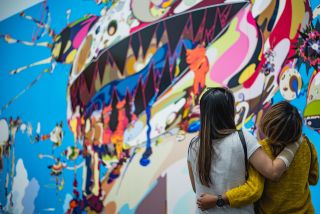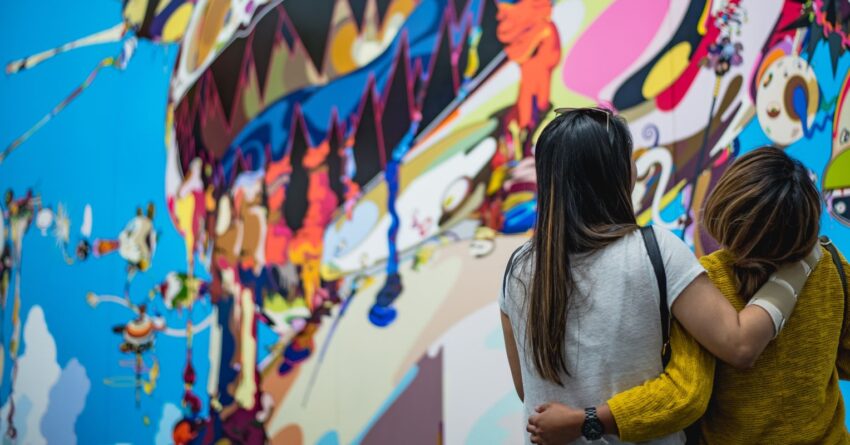
Source: Chris Palomar / Unsplash
By Sujal Manohar, BS, BA1, 2 and Tasha Golden, PhD1.
The United States has experienced numerous tragedies in the past year, from the devastating wildfires in Maui to mass shootings in schools and places of worship. Such events are associated with psychiatric distress and psychiatric disorders, including anxiety and post-traumatic stress disorder (PTSD). These traumatic experiences can affect our brain function and amplify our stress responses. With such profound mental health impacts, how can communities move forward after catastrophic events?
Community arts and cultural resources may be part of the solution, mobilized in the face of tragedy to help survivors heal. While traditional mental health care is critical, it is also clear that, in times of crisis, people often seek out the arts and creative practices.
Many arts-based programs have already been successful in supporting community members after traumatic events. For example, after Hurricane Maria, Puerto Rican children benefited from arts-based activities that facilitated reflection. Other trauma survivors, incarcerated adolescent girls, found value in a musical theater performance program to express their experiences.
Chicago’s Project Fire uses glassblowing to help young victims of gun violence connect to a community, find mentorship, and aid their healing process. The Healing Uvalde Mural Project seeks to honor and remember the victims of the Uvalde shooting with colorful murals created by community members. These are just a few examples of the many ways in which community-based arts programs help communities heal, whether through established programs or informal initiatives.
The idea of utilizing art for trauma recovery is not new or novel; art and music therapy have well-recognized mental health benefits for PTSD patients, such as increased relaxation and decreased psychological trauma symptoms. But beyond the benefits offered by licensed art or music therapists, evidence also suggests that general arts engagement can help improve outcomes related to mental health and trauma recovery, such as social connection, self-efficacy, physiological functioning, and positive affect.
These outcomes can positively contribute to mental well-being, which in turn aids in trauma recovery. Indeed, amid the quarantines for the COVID-19 pandemic, interest in arts activities surged all over the world, with one study noting that 85 percent of individuals used art to cope with their feelings during this time.
Arts programs have also been shown to decrease symptoms of PTSD and depression, and help people process traumatic memories. For example, one study found that when trauma survivors participated in a weekly craft group, they experienced significant reductions in anxiety, depression, and stress, while self-esteem and self-confidence rose.
Arts programs can also increase levels of community involvement, which can be an important factor in healing; more specifically, arts engagement has been linked to feelings of social connectedness, which has known mental and physical health benefits. Drawing from this evidence, many arts programs such as Path with Art or Project Fire intentionally focus on social connection and belonging as part of their aim to support trauma recovery.
Programs like these not only offer direct benefits for healing and recovery, but they can also provide trusted access points for standard support and care services. For example, individuals who are not connected to health or social care providers due to cost, transportation, trust, or educational barriers may be able to reach a local arts or cultural organization—which can then link them to the care they need.
While it is not yet common to think of community arts organizations as portals to health and social care, trusted community entities (e.g., faith-based organizations, barbershops, hair salons) often partner with public health to provide crucial access points for screenings, education, and other health-promoting interventions. Many of these organizations are also trusted spaces that honor community culture and interests. Adding community arts organizations to these types of partnerships with public health, healthcare, and social care systems can enhance and expand local efforts to improve access and care.
Tragedies such as natural disasters and violent events have lasting impacts, and substantial evidence highlights art’s positive effects on mental health outcomes associated with trauma recovery. This suggests there is value in recognizing the community-based arts and cultural practices that community members find relevant, meaningful, and supportive, and integrating these practices into community care strategies—particularly in difficult times. The models mentioned here indicate the promise of this approach, and health and social care providers in the U.S. are increasingly recognizing the value of linking their patients to local cultural resources.
All of this points to an opportunity to enhance local responses to collective challenges by recognizing the pivotal role of the arts. Urgent and complex needs warrant solutions that are informed and bolstered by diverse local assets. When allocating funding and resources for communities affected by traumatic events, trusted community cultural programs and initiatives can serve as vital partners in recovery. The arts, with their unique ability to foster resilience and facilitate healing, should play an important role in this work.
1. International Arts + Mind Lab, Johns Hopkins University. 2. School of Medicine, Baylor College of Medicine.
